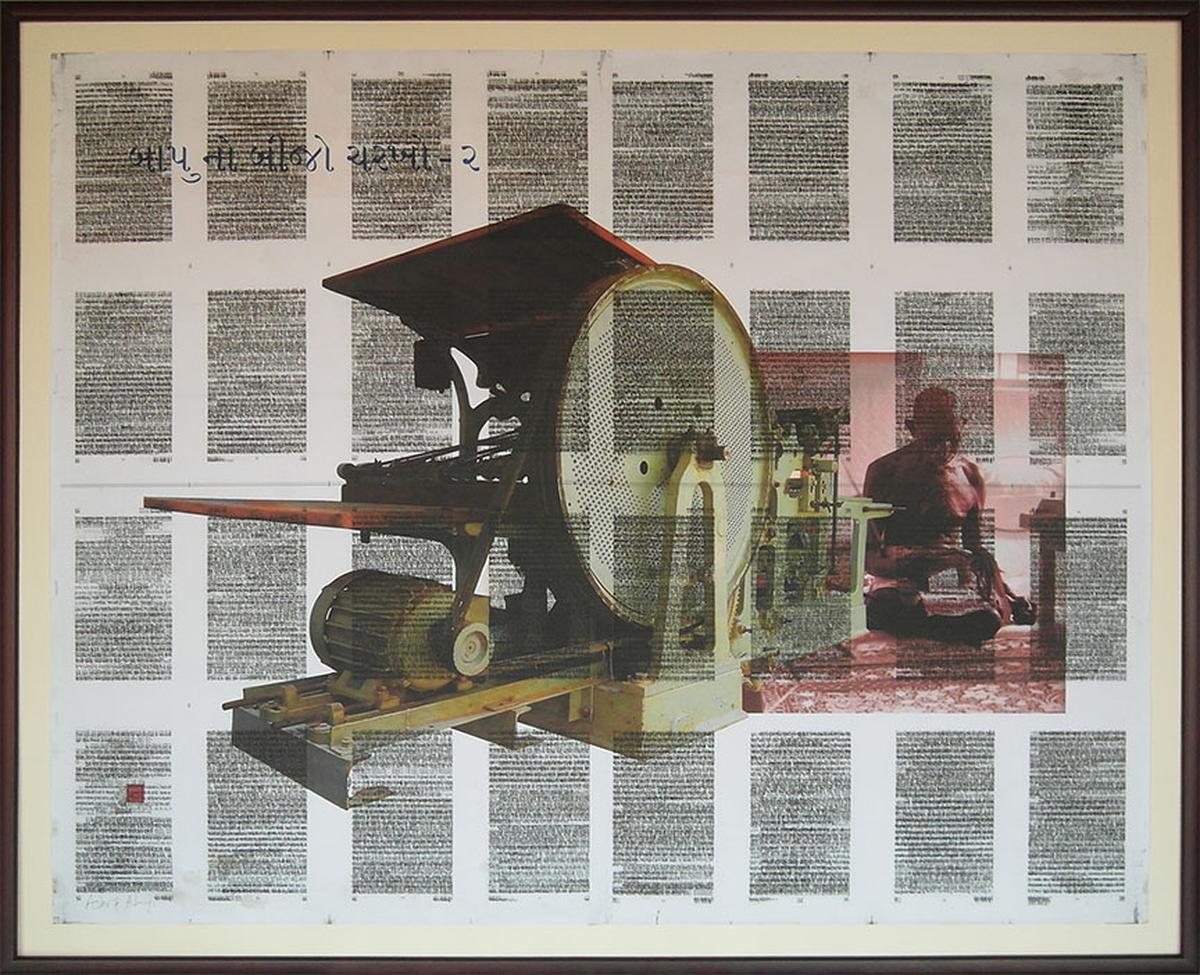Artifacts aim to provide viewers with an understanding of life after Gandhi
Artifacts aim to provide viewers with an understanding of life after Gandhi
There is no doubt that Gandhi is one of the most iconic figures of the post-independence indiaBut what do her images really mean to us?
Artists Anuj Ambalal, Ashok Ahuja and Sharad Sonkusle attempted to uncover some of these narratives in their exhibition ‘Bapu in Three Voices’ displayed at Gallery Espace. New Delhi, With a mix of image and text, documentation as well as interpretation and vision, artists think in their own way about what Gandhi means to them.
Ahmedabad-based Ambalal’s photographs focus on the Mahatma’s manifestations in contemporary times – Gandhi framed behind the absent ‘Babu’s Table’; replicas of his personal effects in glass cases in museums; Shelves in a printing press full of unsold piles of his books; And so on. “The references to Bapu’s ideology are encrypted in these images to unearth a narrative woven with humour, irony and admiration,” says Ambalal.
Sharad Sonkusle uses sheets of rice paper and ink to give the audience a glimpse of the Mahatma’s mind.
For painter Sonkusle, it was more about imagining the vulnerable or all-human side of the Father of the Nation. His mixed media canvas, using sheets of rice paper and ink, is described in his autobiography about the Mahatma’s childhood and early youth, The Story of My Experiments with Truth, The artist carefully typed out paragraphs from the book, among other interventions – one passage marked in red ink, crisscrossed paragraphs, or the other covered with a half-circle in black ink. This ‘executive draft’ of Bapuji’s writings, in a sense, though conjectured, gives a glimpse into his mind, doubts, confusion and all.

‘Bapu’s Other Charkha’ by Ashok Ahuja.
In a different way, Ahuja’s prints also shed light on the words of Gandhi, a prolific writer, for whom the press was no less than a tool in his satyagraha arsenal. Charkha, Ahuja says, “It is a tribute to a man who, amazingly, with simple black ink, was able to dispel darkness and spread light, sharing his vision of a bright new world with the people of his country. for.”
The artifacts on display thus preserved in museums and institutions focus on Gandhi’s legacy and the books written by him, to provide visitors with an understanding of the later life of this remarkable figure. What he stood for remains relevant in today’s deeply divided world, and can help serve as a reminder of what can be achieved through faith in humanity.
‘Bapu in Three Voices’ will be shown at Gallery Espace till September 12, 2022.
The writer is a critic-curator by day, and a creative writer and visual artist by night.